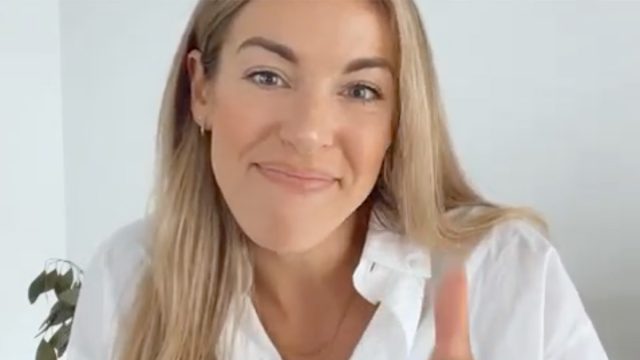10 Secrets to Melt Fat Fast That Experts Swear By (No Starvation Required)
Are you ready to discover the secrets to melting fat fast without starving yourself? Look no further! Dani Marenburg, a double-certified nutrition coach who has helped over 1,000 women achieve their weight loss goals, is here to share her expert wisdom. On her podcast Mindin' My Macros, Dani reveals game-changing strategies for sustainable weight loss that don't involve deprivation. We've gathered her top tips, along with insights from other nutrition experts, to bring you key fail-proof methods to shed those stubborn pounds while keeping hunger at bay. Get ready to transform your body and your relationship with food.
Choose a Timeframe
Dani underlines the importance of setting a specific timeframe for your calorie deficit. "A timeframe for a calorie deficit is anywhere from about four weeks up to 16 weeks," she explains. At the 16-week mark, it's crucial to either reverse diet or take a diet break. This approach helps prevent burnout and ensures sustainable results.
Blanca Garcia, RDN, supports this gradual approach: "The healthier, more achievable goal is to make lifestyle changes that are small but doable." Experts generally agree that "a safe and sustainable rate of weight loss is generally around 1-2 pounds per week. A reasonable target for many individuals is around 0.5% to 1% body fat reduction per week."
Adopt the 80/20 Rule
Perfection often leads to burnout. Dani recommends following the 80/20 rule, or even a 90/10 approach during a calorie deficit. "Whole foods have a greater thermic effect on the body," she notes. This means you burn more calories digesting them compared to processed foods. However, don't completely eliminate treats – plan your day around them to maintain balance.
Garcia echoes this sentiment, suggesting to "take an inventory of what you eat, identifying foods that you can avoid already automatically helps lower caloric intake that was unnecessary." She also recommends "The increased consumption of monounsaturated fatty acids and polyunsaturated fatty acids, these are the good fats that are typically found in nuts, seeds, beans, legumes, and avocado."
Cook at Home
"Cooking most of your meals at home is really going to be very beneficial during a calorie deficit," Dani advises. This gives you control over ingredients and portion sizes, making it easier to track your intake accurately.
Garcia supports this approach, stating, "The fastest way to lose body fat—and do it safely—is to eliminate highly processed foods, like fast foods, pre-packaged foods, pastries, sugary beverages. All of these foods contribute to significant amounts of saturated fats and simple sugars that are stored as fat."
Listen to Your Body
Pay attention to biofeedback. Dani warns, "If you are experiencing extreme hunger, maybe you're getting really, really hangry… you are either in too steep of a deficit or you've been in a deficit too long." Other signs to watch for include fatigue, weakness, headaches, and impaired sleep.
Catherine Gervacio, a Registered Dietician, adds an important perspective: "Shift your mindset from just weight loss to overall well-being. Consider factors like energy levels, mood, sleep quality, and overall health as important markers of success."
Increase Daily Movement
Rather than drastically cutting calories, Dani recommends increasing daily movement. "You're creating more of a deficit. You're creating part of a deficit from food intake, but you're increasing that deficit through your daily movement," she explains.
Garcia supports this approach, stating, "A low-impact physical activity like walking, jogging, swimming, cycling is the preferred method for fat loss." She suggests, "I usually encourage 30 minutes daily of just walking. They can do it all at once or break it down to two 15-minute sessions."
RELATED: I'm a Nutritionist and I Lost 80 Pounds With These High-Protein Chick-fil-A Orders
Stay Within Your Macro Range
Consistency is key, even on weekends. Dani points out, "The weekends make up 30% of your week. That is a big chunk of the week, and if you are not taking into account your tracking or your macros on the weekend, you can pretty much guarantee that you're not going to see the results that you're hoping for."
Use Cardio Strategically
While cardio can aid fat loss, Dani recommends prioritizing strength training. "Strength training in a calorie deficit is not intended to build muscle. What it's intended to do is to preserve the muscle mass that you have," she explains.
RELATED: I Lost 20 Pounds in 6 Weeks on Wegovy by Eating These 9 Foods
Consider Carb Cycling
Carb cycling can make a deficit more sustainable for some people. Dani suggests, "If you're somebody who weekends are your tough spot, maybe you do your high carb days on the weekends." This provides more flexibility when you need it most.
Prioritize Sleep
Don't underestimate the power of good sleep. "It is so critical that we are getting enough sleep. This is when our body rebuilds and develops," Dani stresses. Aim for 7-8 hours per night and establish a consistent bedtime routine to improve sleep quality.
RELATED: 19 Weight Loss Errors Nutritionists Wish Everyone Would Stop Making
Practice Patience
Sustainable results take time. Dani reminds us, "Sustainable fat loss looks like a half a pound to two pounds of weight per week being lost." This aligns with the expert consensus on safe and sustainable weight loss rates. Consistency and patience are key to your success, and focus on overall health rather than just the number on the scale. And if you enjoyed this article, don't miss I'm a Nutritionist and Here Are 25 Weight Loss Truths You Need to Hear.





